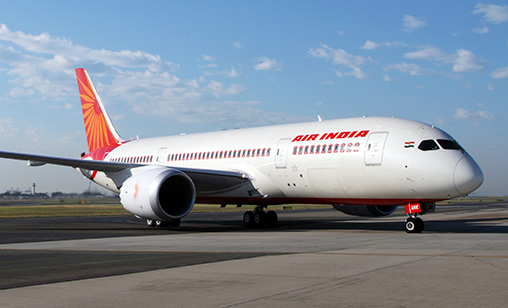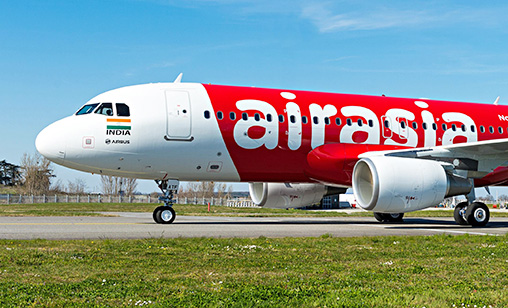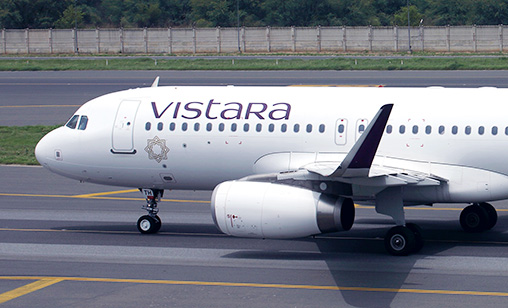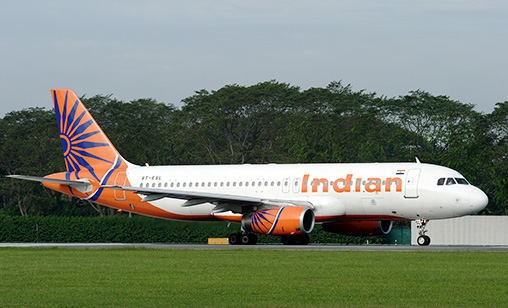News Backgrounder
Tsunami of the skies ahead for India’s airlines
Tata Sons takeover of the country’s national carrier will change India’s aviation sector forever, reports Anjuli Bhargava.
October 22nd 2021
Many sectors of India’s economy remain in the throes of coping with the shock of the global pandemic, but the country’s aviation industry has been worse hit than most after the shutdown of flights in March 2020 and the emergence of a second wave of COVID-19 in April and May this year. Read More »
Ahead is another shock for the sector following the sale of Air India to conglomerate, Tata Sons, earlier this month.
 |
Like all airlines in India, the national carrier has been struggling to survive through the pandemic. But unlike its rivals, Air India has been struggling to survive well before the pandemic. Post a botched merger between Air India and Indian Airlines in 2007-2008, the airline continued on its relentless path of deterioration alongside an unending drain on the exchequer. Its market share has collapsed to a fraction of its glory days value. Service standards have plummeted as has employee morale. The airline’s aircraft reflect its overall condition: jaded, shabby and neglected.
On October 8, after one failed attempt to sell in 2018, India’s financially strapped government sold the airline to Tata Sons, a part of one of India’s large industrial groups and the conglomerate that founded the airline close to 89 years ago.
When the deal is completed, expected in December, the airline will have cost the conglomerate US$2.4 billion. The sale package is made up of $368 million in cash for 100% of the airline plus an agreement to take on $2 billion of its $8.2 billion debt.
The sale is momentous and historic. With it, the country’s aviation sector is poised to change forever. The Tata conglomerate, widely known in India as the Tata’s, already has two joint venture airlines in its corporate portfolio: AirAsia India and 51%-owned Vistara with Singapore Airlines (49%).
The aviation industry hopes, although it is far from certain, that the government’s attitude to privately owned airlines will now alter. Throughout the history of Indian aviation, private airlines have accused the powers that be of favouring Air India with the disbursal of the best slots, privileges and treatment given to “The Maharajah”.
 |
Air India and Indian Airlines top management deny the allegations and counter argue most government ministers have variously favoured some private airlines usually for their own gain.
Post sale, it is hoped India’s aviation minister and regulators will treat all airlines equally. Additionally, since Air India will lose its position as the national carrier, industry sources predict the allocation of bilaterals, slots, airport office accommodation, lounges and several other industry privileges often bestowed on it will now be available to all.
“We should see a much more competitive industry emerging as a result,” Shakti Lumba, an industry expert and a member of IndiGo’s founding team, told Orient Aviation.
Only time will tell, but what will certainly undergo a paradigm shift is the dynamics of the sector. If the Tata’s successfully execute the merger of their two existing joint ventures into Air India in coming months, the new entity will emerge as the second largest airline in India. It will eventually offer competition to IndiGo, an LCC in its worst shape ever due to the pandemic. The outcome of this strategy will redefine the positions of India’s other airlines.
It also will change the operational dynamics of foreign airlines, be it Emirates Airline and its UAE rivals, Singapore Airlines or the American carriers. Several of these companies depend on Indian traffic for a large part of their passenger demand.
With Tata’s running Air India, these airlines will have a new, well-funded and reasonably hefty competitor with access to traffic rights, slots, pilots, technical expertise, and presumably, the determination to make Air India a success.
The new Tata entity and IndiGo will challenge foreign carriers who have enjoyed an almost free reign over Indian traffic, particularly transit, in the past.
 |
Depending on the aircraft the newly merged airline decides to operate, either Airbus and Boeing will win or lose. Pilots, cabin crew and aviation managers will have a possible new employer more trustworthy than most of the existing players. Skilled staff might jump ship for the security of Tata’s.
Undercutting of fares, a practice Air India often indulged without thinking as the bill was paid by the taxpayer, should be less frequent, leading to an improvement, or at least altered economics, for its rivals.
So in general, it is fair to say the sale of the national carrier will redefine Indian aviation in ways we cannot yet fully envisage.
Tata’s sources have confirmed the conglomerate will merge Vistara and AirAsia India into its overall airline operations. The details of the mergers are yet to be announced, but it is expected the final result will be one umbrella carrier large enough to contest IndiGo’s hegemony.
Sources in Tata’s said they were in a Catch-22 situation. The two existing airlines are making heavy losses and unless they attain a certain size, this is unlikely to change. “With a 10%-12% share between their two assets, the Tata’s will continue to bleed,” said Lumba.
To get anywhere, they don’t have any option but to buy an airline like Air India to attain some size. A former Tata nominated AirAsia India board member said to “make good” on the investment, reaching a certain scale is critical and that is where the Air India purchase comes in, Otherwise, the group would face the very real prospect of continuing to bleed for decades in India’s brutally competitive skies.
The next question that arises is will or can the Tata’s, who set up the airline in October 1932, return the carrier to its previous glory? Former finance and aviation secretary, Ashoka Chawla, said Air India was once the “crown jewel” not just of Indian aviation but of global skies. Although it has sadly lost its “exalted position”, there was “no reason”, with correct handling, it could not re-enter the “hall of fame”, he said.
 |
Former boss, Vishwapati Tridevi, echoed this sentiment when he said ”beauty lies in the eye of the beholder and the Tata’s can see Air India’s intrinsic value”. The company only needs to get the right, experienced hands to unlock this value, he said.
This is the point at which doubts begin to surface about the deal. Do the Tata’s, seen as the closest the country has to a “public private enterprise” have the bandwidth to pull this off?
Many pundits point out that despite having two airlines on its watch, Tata’s has no experience in running such businesses because effective control of the two carriers remains with their joint venture partners. It has a freer hand at AirAsia India following the exit of Tony Fernandes, but it still has to sort out Vistara with Singapore Airlines - be it carrying the partner along or seeking its exit.
Others question Tata’s overall management depth. Yes, TCS, one of the Tata Group companies, is profitable, but it is one of the few in the Tata stable that is. In general, the performances of Tata Group companies are not shining examples of corporate excellence. So the question is how will the new Air India owner manage something as ambitious as this?
Generally in India there is a negative attitude to inorganic expansions and mergers in aviation. It does not help matters that the new entity emerging from Air India’s shadow is likely to be a mix of four different airlines: Air India, Indian Airlines and the two joint ventures carriers, one full service and the other an LCC.
“Assuming the Tata’s operate one umbrella entity, the critical X factor will be how successfully they manage to merge different cultures. Even globally, it is recognised most attempts at inorganic growth stumble when the marriage of cultures fail”, former aviation secretary, Ashok Chawla, said. A classic example is the merger of Air India and Indian Airlines. The two organisations remained rooted in their own individual cultures and failed to find common ground.
Another even bigger question is who will lead the new “khichdi” (broth) of carriers? Although AirAsia India CEO, Sunil Bhaskaran, has been at the forefront of the bid negotiations the group also has brought in many external consultants and advisors. The job would require a CEO of the calibre of David Neelman, founder of five commercial airlines including JetBlue and now Brazilian Azul, many in the industry reckon. A former Air India executive director said “mad, bad and dangerous to know” were the three terms used to describe Lord Byron by his lover, Lady Caroline Lamb, The same traits were, in his view, needed in anyone running the new Air India.
IndiGo’s struggles to attract the right CEO for its plans don’t offer much consolation. Although both founders were keen on a younger candidate to head the airline after former president, Aditya Ghosh, was asked to leave, they settled for Rono Dutta although age was not on his side. Dutta is holding the ship as steady as possible, but his time at IndiGo can at best be limited.
Recruiting expatriate talent to India’s aviation sector, for love or money, has proved difficult for almost all of the country’s airlines. Moreover, it is both expensive and not necessarily an ideal fit. India’s operating environment is so alien that many expatriate managers have failed to acclimatize to it, failing in the end to deliver.
“We are like this only and this is pretty unique!” said a former ministry of civil aviation secretary. “India is not everyone’s cup of tea. What works quite easily in other countries may not necessarily work here.”
So the big question everyone is asking : Who will perform this miracle for the Tata’s?
In the meantime, anticipation, excitement and trepidation are ruling the Indian skies following the sale. For thousands of the airline’s employees and India’s entire aviation sector, change is the only certainty.